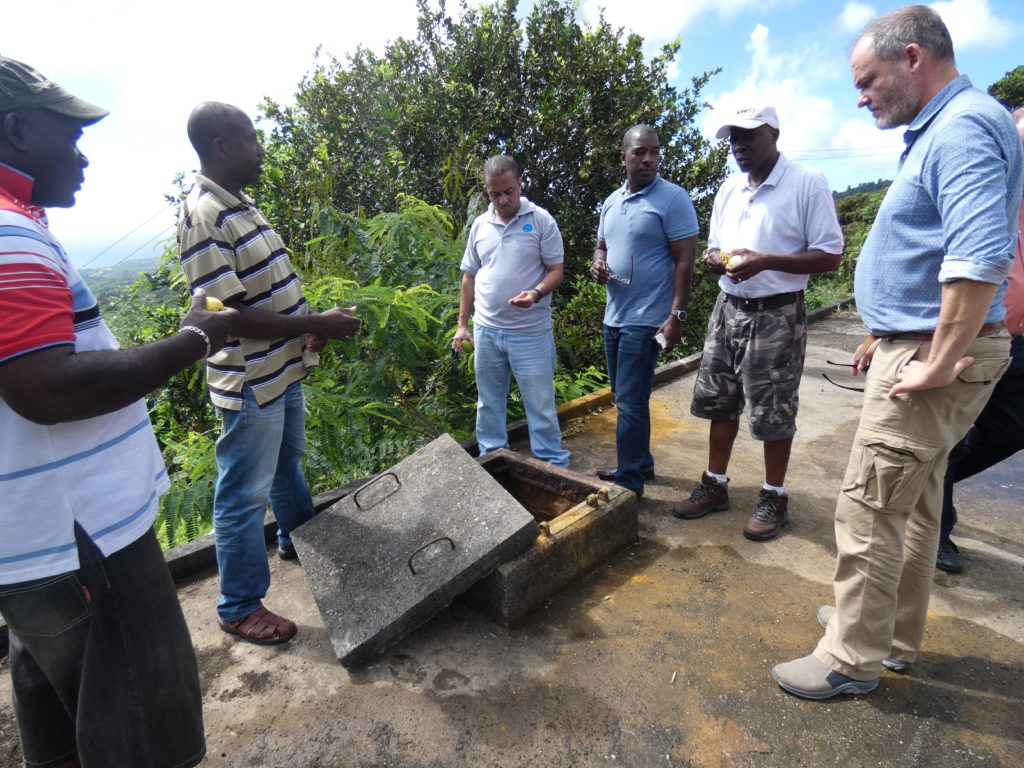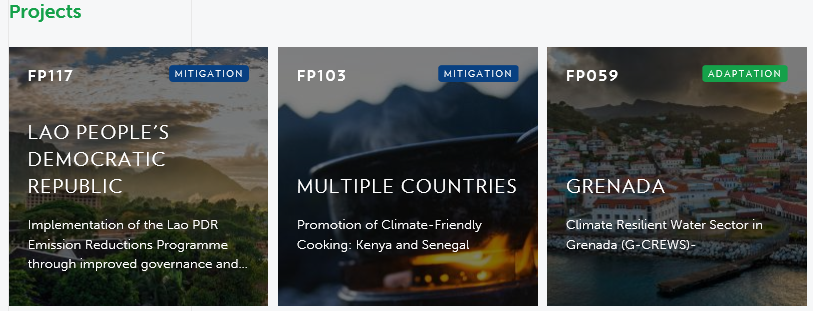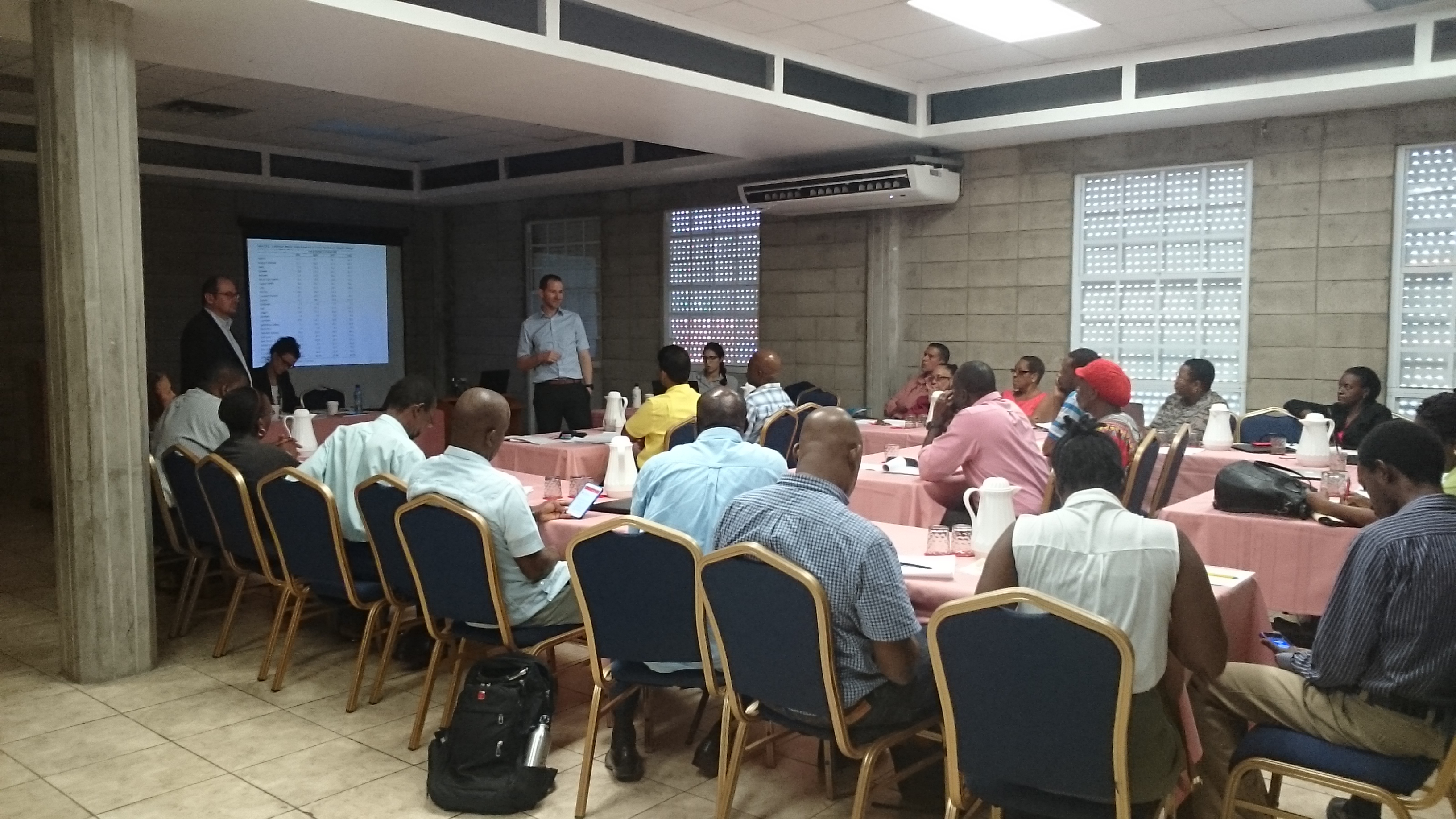E Co. Lunch breaks: GIZ – Lessons learnt about GCF project development
14 May 2020, Battsetseg Tseren, Category: All insights, News, Tags: climate finance, climate projects, gcf, GIZ, lunch breaks, project design, project development

Feature photo credit: Former Ecosystems Management Senior Specialist Patrick Van Laake at GCF visit in Grenada (Marion Geiss)
This series is part of our Environmental policy – learning from our associates, partners and friends of E Co. and highlighting the good work they’re doing. We’ve worked closely with the GIZ climate finance team in the past on projects such as the GCF Renewable Energy Guidance. Battsetseg Tseren, Laura Rosanowski and Jan Engelmann share their lessons learnt from the GCF project development processes.
The Green Climate Fund (GCF) does not directly implement projects itself, but through partnership with its Accredited Entities. Accredited Entities stay at the core of GCF’s funding proposal cycle, which stretches from ideation to the development of a concept note and full funding proposal as well as project implementation. This can be a very challenging and complex process.
Here, we share important lessons learnt from the first GCF project development processes of the Deutsche Gesellschaft für Internationale Zusammenarbeit (GIZ) GmbH, focusing on concept note and funding proposal development. Amidst the COVID-19 pandemic, GIZ is testing different working modalities and is for instance conducting virtual missions [1] to its project countries. The article, therefore, also provides a glimpse into its early lessons learnt and important aspects for e-missions.
About GIZ and the work we do
GIZ is one of the largest organisations that provide international development cooperation for sustainable development, with over fifty years of experience in a wide variety of areas. GIZ became accredited by the GCF Board in October 2016 as its implementing entity for receiving grants for projects with a total volume of up to USD 250 million (including co-financing) and safeguard risk of low or medium category.
In our partnership with GCF, we focus on robust climate projects with a strong potential for sustainability through the blend of capacity development, technical assistance and grant intermediation. To date, GCF Board has approved three projects with GIZ as an Accredited Entity. Our Business Development Unit is currently developing further project concepts with a range of potential implementation partners at different stages of project development.
Lessons learnt from GCF processes

GCF Projects approved with GIZ as Accredited Entity (GCF website)
1) Concept Note Development
In GCF project development, the concept note is an optional, yet essential document for outlining fundamental elements of an intended project or programme. This provides countries and Accredited Entities with an opportunity to receive early feedback from GCF Secretariat. The main goal during this phase is to:
- Engage with and confirm the interest of key partners
- Collect available data, and
- Develop a robust Theory of Change
Process-related lessons learnt
Engaging with and entering into a dialogue with the National Designated Authority (NDA) at the very beginning of project development is a requisite for ensuring country ownership and formulating a concept that well aligns with a country’s climate investment policies and priorities. This helps to ensure political ownership, accountability, and support for the upcoming process. In the case of GIZ, which has a strong presence in over 120 countries worldwide, this is realised through and founded upon the principle of trusted, close collaboration with partners, including solid ownership of national governments.
Furthermore, it is crucial to initiate early discussions on co-financing with partners and to identify potential Executing Entities. Bearing in mind the subsequent lengthy process for funding proposal development and review as well as to keep the momentum, the concept note process should be kept relatively short, e.g. four to six months.
Content-related lessons learnt
It is important to start with the climate problem and develop a Theory of Change that addresses the actual climate problem, therefore building a rationale for argumentation and work on the GCF Investment Criteria from the beginning.
The development of a Pre-Feasibility Study is a worthwhile investment as it can be extended to the actual Feasibility Study, which is mandatory for the funding package. Moreover, visualising project arrangements, such as Flow of Funds, contractual arrangements, or Theory of Change, in graphs proved to be very helpful for establishing a common understanding and discussing the project concept with GCF or other partners.
2) Funding Proposal Development

Stakeholder consultation workshop for environmental and social impact assessment in Grenada (Marion Geiss)
Process-related lessons learnt
As the funding development is a very time and resource-intensive process, well-structured steps and clear arrangements are crucial to ensure the process goes smoothly. This includes organising kick-off workshops with the whole project development team to re-confirm roles and responsibilities and to agree upon time frame, logistics, but also with project partners to explain the process, the GCF-specific requirements for project preparation, deliverables for submission, mutual expectations and required inputs by the partners involved.
The following sequence of project design steps proved to be efficient:
- Define in detail the baseline first, incl. quantitative data
- Outline the (climate) problem and barriers
- Develop solutions to overcome barriers, and only then
- Design the detailed project concept with its activities
During the preparation phase, ensure a wide stakeholder consultation process (with relevant government and private actors, NGOs/CSOs, local population, etc.) and its proper documentation to include the different views and concerns in the project concept.
Content-related lessons learnt
Previous processes have reinforced the great importance of a) a solid baseline – backed up by documented field visits and stakeholder consultations; b) early identification of potential unintended impacts on indigenous peoples or other groups, e.g. due to displacement (safeguards) and how to address them; c) sound financial mechanisms and clear implementation arrangements; and d) a strong post-project sustainability strategy.
Moreover, since Executing Entities will be key players during project implementation, they should be selected under consideration of the following questions: Are they willing to:
- Take a major role within the project?
- Have the capacities of implementing the assigned activities?
- Provide co-finance towards the project?
- Have their own legal personality (required by GCF for acting as an Executing Entity)?
As a general rule, local institutions should be preferred over international ones in order to strengthen capacities in the country.
3) E-Missions: virtual is the new normal

GIZ improving forest and land-use management by implementing Emission Reductions Programme in Lao PDR (Laura Kiff)
The current COVID-19 pandemic has affected the project development processes of a number of entities, including GIZ. Due to travel restrictions and lockdowns, scoping missions to project countries had to be cancelled. We’ve responded to the situation by adapting in different ways, such as through virtual E-Missions.
Overall lessons learnt at time of virtual project design
Our project development teams are now re-organising their scoping missions virtually to accelerate its project preparation processes amid the pandemic. The project teams are testing different modalities of virtual meetings and found it important to introduce explicit roles and responsibilities for moderators and participants, clear agenda-setting as well as identification of intended outcomes well in advance. The alternation between “input days” (focusing on thematic inputs) and “output days” (focusing on writing sessions and conceptual work) proved to be very efficient. A remote mission should not be overloaded with too many workshops or lengthy inputs, but rather be well-prepared in advance and focus on a few key aspects. It is worth highlighting that the visualisation of processes and project set up is key for a common and easy understanding.
Written by: Battsetseg Tseren, Laura Rosanowski, Jan Engelmann
Appendix
[1] Missions: Country field-trips
Share your stories
Are you interested in sharing your project or programme with our readers? Let us know – media@ecoltdgroup.com
Join the conversation by posting a comment below. You can either use your social account, by clicking on the corresponding icons or simply fill in the form below. All comments are moderated.